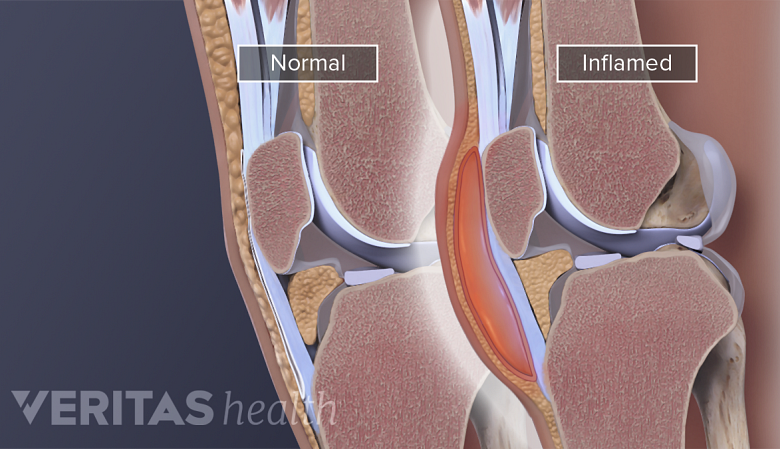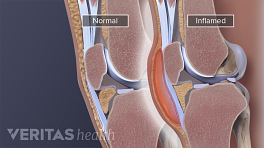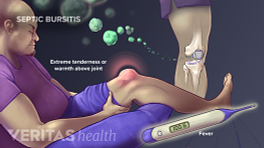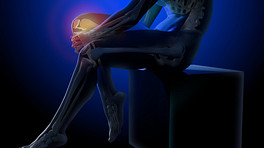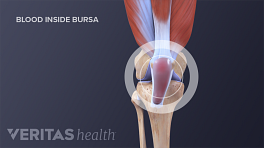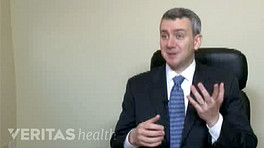The most common symptom of prepatellar bursitis is swelling at the kneecap. When bursitis is caused by a trauma to the knee or infection (septic bursitis), the swelling and other symptoms may appear rapidly. When bursitis is caused by mini-traumas, such as repeated kneeling, symptoms are more likely to appear slowly, over several days or weeks.
The most common symptom of prepatellar bursitis is swelling at the front of the knee.
In This Article:
Common Signs and Symptoms of Knee Bursitis
An inflamed prepatellar bursa can result in one or more symptoms. These symptoms can range from mild to severe. Signs of septic bursitis are a cause for concern and require immediate medical attention.
Swelling at the font of the knee
An inflamed prepatellar bursa fills up with fluid, causing swelling that can be felt and seen through the skin. As it progresses, the knee joint may look double in size. The swollen area may seem “squishy” to the touch.
See What Causes a Swollen Knee (Water on the Knee)?
Range of motion
Mild to moderate knee bursitis usually does not limit joint movement. More severe cases may make it difficult to completely flex or straighten the knee.
Tenderness and pain
The severity of knee bursitis pain and tenderness varies. For example, the affected knee may:
- Feel uncomfortable and achy, even while resting, as well as tender
- Have no pain at rest but feel tender when kneeling, bending, or just pressing on the skin over the knee
- Have no symptoms of pain or tenderness
The sensations of tenderness and pain may increase as the bursa swells larger over time, particularly if the bursa gets squeezed during extreme bending or straightening of the leg.
Changes to the skin
The skin over the affected knee may look pink or red. It may also feel noticeably warm—research suggests the skin temperature over an infected bursa may increase by nearly 4° F or more. 1 Smith DL, McAfee JH, Lucas LM, Kumar KL, Romney DM. Septic and nonseptic olecranon bursitis. Utility of the surface temperature probe in the early differentiation of septic and nonseptic cases. Arch Intern Med. 1989 Jul;149(7):1581-5. doi: 10.1001/archinte.149.7.1581. PMID: 2742432. Such changes to the skin are more common in cases of septic bursitis.
Fever and illness (septic bursitis only)
Bursitis symptoms accompanied by a fever, chills, fatigue, or a general feeling of sickness, may be a sign of septic bursitis. Septic bursitis is a serious condition and requires immediate medical care.
Septic bursitis is caused by an infection in the bursa. If the infection is left untreated and spreads to the bloodstream, it can be a life-threatening condition. Treatment can help ensure that the infection does not spread.
A person who has symptoms of knee bursitis is advised to contact their health care providers for a definitive diagnosis and treatment recommendations. He or she can also help identify the underlying cause of knee bursitis.
